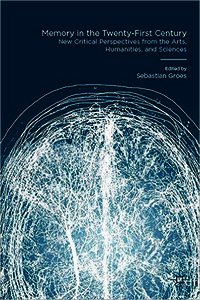Death and Memory in the Twenty-First Century
Pitsillides, Stacey 
![Front cover [thumbnail of Front cover]](https://gala.gre.ac.uk/15359/1.hassmallThumbnailVersion/15359_Pitsillides_Memory%20in%20the%2021st%20century%20%28bk%20cover%29%202016.jpg)  Preview |
Image (JPEG) (Front cover)
15359_Pitsillides_Memory in the 21st century (bk cover) 2016.jpg - Supplemental Material Download (72kB) | Preview |
|
PDF (Publisher's Proof PDF)
15359 PITSILLIDES_Death_and_Memory_(Final Proof)_2016.pdf - Published Version Restricted to Registered users only Download (97kB) |
Abstract
Technology has always played a key role in holding onto some of the precious experiences we collect over our relatively short lives, in order to pass them on to the next generation. This can even be linked to communication practices which pre-date language. The connection between external communal memory and symbolic meaning may even have already existed as a practice during Neanderthal times. This was enacted through the shaping or engraving of found objects, like shells. Over time these non-functional or ornamental objects became integrated into many day-to-day practices, signifying the connection between material culture and communication skills (D’Errico and Vanhaeren 2009). As society developed so did our understanding of materials, particularly those most close to hand, like clay. By exploring hand production through the physical transformation of a malleable material into a fixed form, we were able to form an external representation of self and to imagine more specialized uses and meanings for the objects that have been created. This was key in forming both a physical and virtual ‘memory’ of our making and indeed our presence in this world. As human beings continued to learn and develop, so did the complexity of the objects and of the systems surrounding the creation of those objects. The culture of making was also further industrialized with the growth of mass production, which meant more sectors of society could have larger collections of personal objects. However, it could be said that it was during the boom of individualism, consumerism and the development of the global village, which created mainstream capitalist democracy after the middle of the twentieth century, that the objects we chose to own and keep over the course of our lives became one of the defining characteristics expressing ‘who we are’ (Bernays 1971) and thus how we would be remembered after death.
| Item Type: | Book Section |
|---|---|
| Uncontrolled Keywords: | Memory, Death, Digital, Archive, Material Culture |
| Subjects: | N Fine Arts > N Visual arts (General) For photography, see TR |
| Faculty / School / Research Centre / Research Group: | Faculty of Liberal Arts & Sciences > School of Design (DES) |
| Related URLs: | |
| Last Modified: | 21 Apr 2017 14:44 |
| URI: | http://gala.gre.ac.uk/id/eprint/15359 |
Actions (login required)
 |
View Item |
Downloads
Downloads per month over past year
 Tools
Tools Tools
Tools